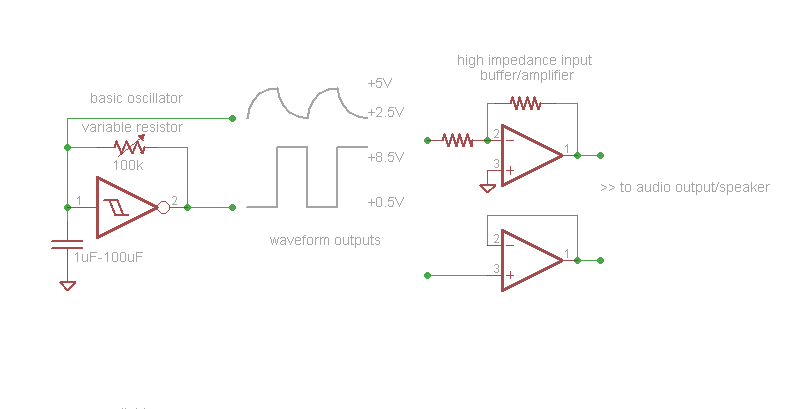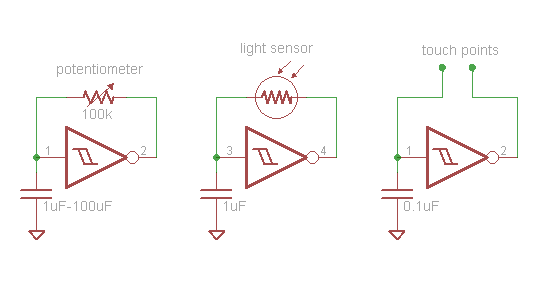This is part 1 of a 3 part series. In part 2 I talk about sequencers. Part 3 combines the first 2 lessons to make a more complex sampler circuit.
Basic oscillator:

This is one of the simplest oscillators you can build. Low parts count, wide frequency range. Easy to tweak.
All that’s needed is an inverter of some kind (in this case its a Schmitt trigger), a capacitor and a resistor.
The frequency of the oscillator is controlled by the capacitor and resistor. Basically the capacitor sets the range and the resistor changes the freq within that range.
Important note:
In order to use the outputs of this oscillator it is necessary to buffer them. If the outputs are connected directly to a component or circuit that PULLS current from the OSC (like a speaker) there will be little or no current left within the circuit to make it oscillate. The role of the buffer is to look at the behavior of a circuit and reproduce that behavior without pulling any current away from the original circuit. The good news is that most audio equipment you would connect the OSC to has buffered inputs. Mixers, amplifiers, most guitar pedals etc. The “triangle” wave output is far more sensitive than the square wave, as well as offering substantially lower amplitude. If you want to use the triangle wave in a larger circuit it is very likely you will have to build an extra buffer as shown in the image below.

More oscillators

Oscillator with rate indication LED

Simple pitch modulation

Syncing oscillators
